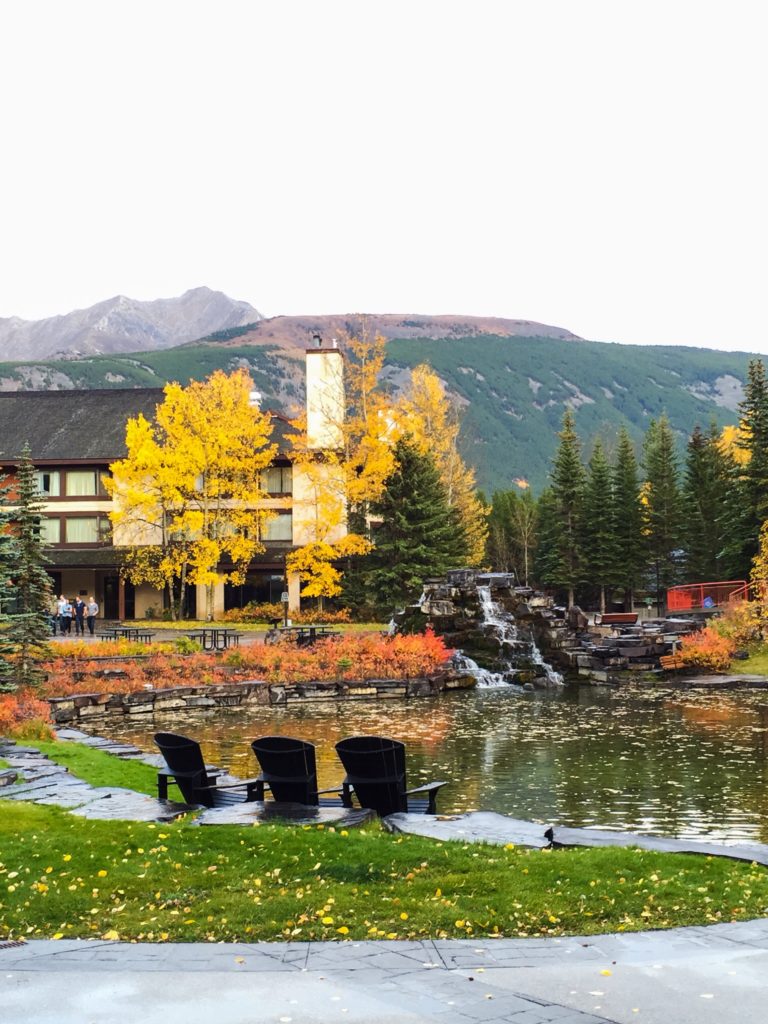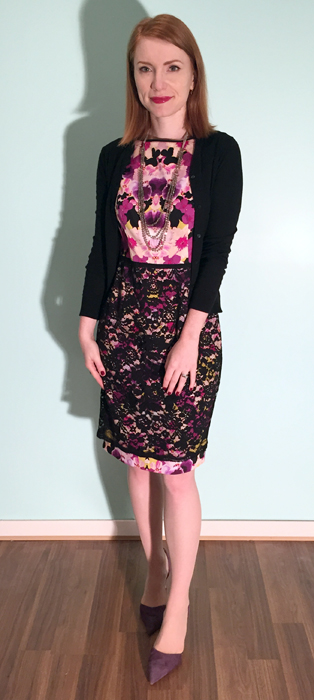Ooh, that sounds ominous, doesn’t it? Click bait title aside, I thought it would be fun to write a post about some of the downsides of thrifting (perceived and real), along with some thoughts about ways to tackle them. I amuse myself in odd ways, OK? If you like to amuse yourself by reading the odd things I enjoy writing, well … read on, my friend.
Thrifting Takes a Lot of Patience & Time
Yes and no. Patience, yes — definitely. I consider myself a pretty seasoned thrifter, and there is only so much I can do simply by eye-balling a rack. Once in a blue moon, a Burberry trench will basically jump out at you among a sea of indifferent coats, but most of the time, you are going to have to get hands-on. And you will most likely have to sort through an endless array of Walmart and Forever21 rejects before you come across a true gem. Patience is also required to learn the ways of the thrifting Jedis — the hand-feel of quality materials, the who’s who of designer labels. There really isn’t a shortcut. Sorry.
Time is another thing. It’s true that thrifting success increases the more time you spend thrifting, but that has more to do with the frequency of your visits, rather than their duration. The actual process doesn’t have to take long. If you’re pressed for time, you don’t need to scour the store from top to bottom; just focus on whatever areas are most interesting or useful to you. My advice is go often, and take it one (or two) sections at a time. Patience will pay off here too, because with practice you will find that it takes you less time to go through racks, which means that you can use your time even more efficiently.
Thrifting Is Location-Specific
True. Some cities have better thrift scenes than others. I have no scientific proof, but I think the best places to thrift are mid-sized towns as opposed to large metropolises; they tend to have the best balance of good selection and reasonable prices. (By contrast, smaller towns might have better prices, but worse selection; large cities, the opposite.) Suburbs or exurbs of large cities are also good bets, in my experience. Location is also important within a particular town. No two thrift stores will have the same selection, so you will need to suss out the ones that consistently get the best donations. Keep in mind that this can be a function of both (a) the habits of donors in the area, and (b) thrift store management decisions. In some places, chain thrift stores with more than one location in a town may move donations around from one location to another. However, for the most part, you can probably safely assume that a thrift store located adjacent to an affluent neighbourhood will get lots of good stuff.
But what if your local thrift scene is not so good … or is non-existent? Unfortunately, if you live in Canada, your options are limited. I suggest checking out Facebook swapping or selling groups in your area, consignment stores, and Kijiji. Etsy and eBay are, of course, also options, but the exchange rate and shipping costs are going to work against you unless you find a local seller. If you live in the US, you’re luckier — there are tons of online alternatives to thrifting available, such as Poshmark, ThredUp, Twice, and so on. And let’s not forget Instagram; there are lots of thrifters who sell online through dedicated IG accounts, and the prices are usually better or at least comparable to eBay and other reselling sites.
(Let me also take this opportunity to plug ye olde blog shop here. And hey, shipping to Canada and the US is included.)
Thrifting Encourages a Buy Buy Buy Mentality
This, in my experience, is all too true as well. Inexpensive clothes beget more consumption, in most people’s cases. After all, entire fast fashion empires have been built on that trend. Of course, the net impact of thrifting (on the environment, and one’s wallet) is typically much lower than buying retail, but it can still add up over time. Worse, thrifting can lead to a terrible case of “overflowing closet, nothing to wear” syndrome. How can one build a well-functioning closet while resisting the lure of cute-but-unnecessary clothes that cost less than a latte?
Let me start by mentioning two approaches that people often suggest in the context of (retail) bargain shopping which I don’t find very workable in the context of thrifting. First, “pressing pause”. The idea there is to stop yourself from acting on impulse, by not immediately buying whatever item caught your eye and instead “pressing pause” for 24 or 48 hours (or some other period of time). If you still want the item at the end of that period, you can then proceed to buy it — or you may realize that you didn’t want the item that badly after all.
I don’t find this approach useful when it comes to thrifting because, at least 80% of the time, you won’t find an item at the thrift store when you go back to get it … even a few hours later. Good finds are scooped up fast, you guys. This one of my personal struggles with thrifting, because it creates a pressure-chamber shopping environment – I need to make decisions (to buy or not to buy) NOW, double quick time. I’ve gotten better at making reliable snap decisions (more on that below), but I still miss from time to time. I tend to look at those “misses” as essentially charitable donations (which is what they actually are in the case of stores like Goodwill), but I still work on reducing poor decision-making.
Second, there is the test favoured in a lot of articles on this subject: would you buy the item at full price? I find this a useless approach because my answer is, 99% of the time, “duh, no.” The truth is that even if I had zero blazers in my closet, and had a super important interview coming up, I wouldn’t pay $400 for a Theory blazer. In reality, I certainly have more than zero blazers in my closet, so paying $400 for a Theory blazer is not even a question. But paying $4 for a Theory blazer? That’s a whole ‘nother story.
OK, so how do I keep my thrifting in check? Well, if you’ve read my recaps then you know that I don’t. Ba-dum-tish! Just kidding – I really do try. Here are some of the things I try to keep in mind at decision time:
– Is this something I truly need? (The answer, for me, is usually no.)
– Is this something that could replace or upgrade an existing piece, especially something that is a wardrobe staple for me?
– Would I pick this item to wear at least as often (or more often) as similar items currently in my closet?
– Does it fit my style vision? (This is a work in progress, but I’ve been getting better at saying “no” to ruffles, skater dresses, and Anthropologie.)
– Does the item feature any of your style deal-breakers? (This is a different way of getting at the same thing as the previous question. If you’re not sure you have a handle on your style, I would echo Into Mind’s suggestion of developing a list of things you know you don’t like – like ruffles, flares, the colour green, etc. It’s very easy to rule out pieces when you’re comparing them against this sort of list.)
– Does the item require costly alterations?
– Does the item require costly upkeep? (Since discovering home dry-cleaning, this has become less of an issue for me, but YMMV.)
– Would I buy this piece if it didn’t have the particular designer label attached? (This is often a big one for beginner thrifters – the thrill of a designer find is hard to resist. I find it gets easier with time to leave behind designers I could only dream of owning in the past.)
I think these types of question can be useful regardless of the shopping paradigm at play (thrift, consignment, retail, etc.) in terms of encouraging more mindful consumption, which is never anything but a good thing.
Ok, your turn now. I would love to hear your thoughts on the “dark side(s) of thrifting — what you struggle with and how you deal with it. And if you’ve got any thrift-related questions, let them fly in the comments!












